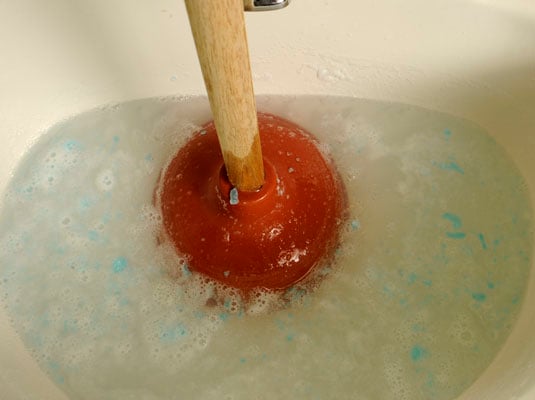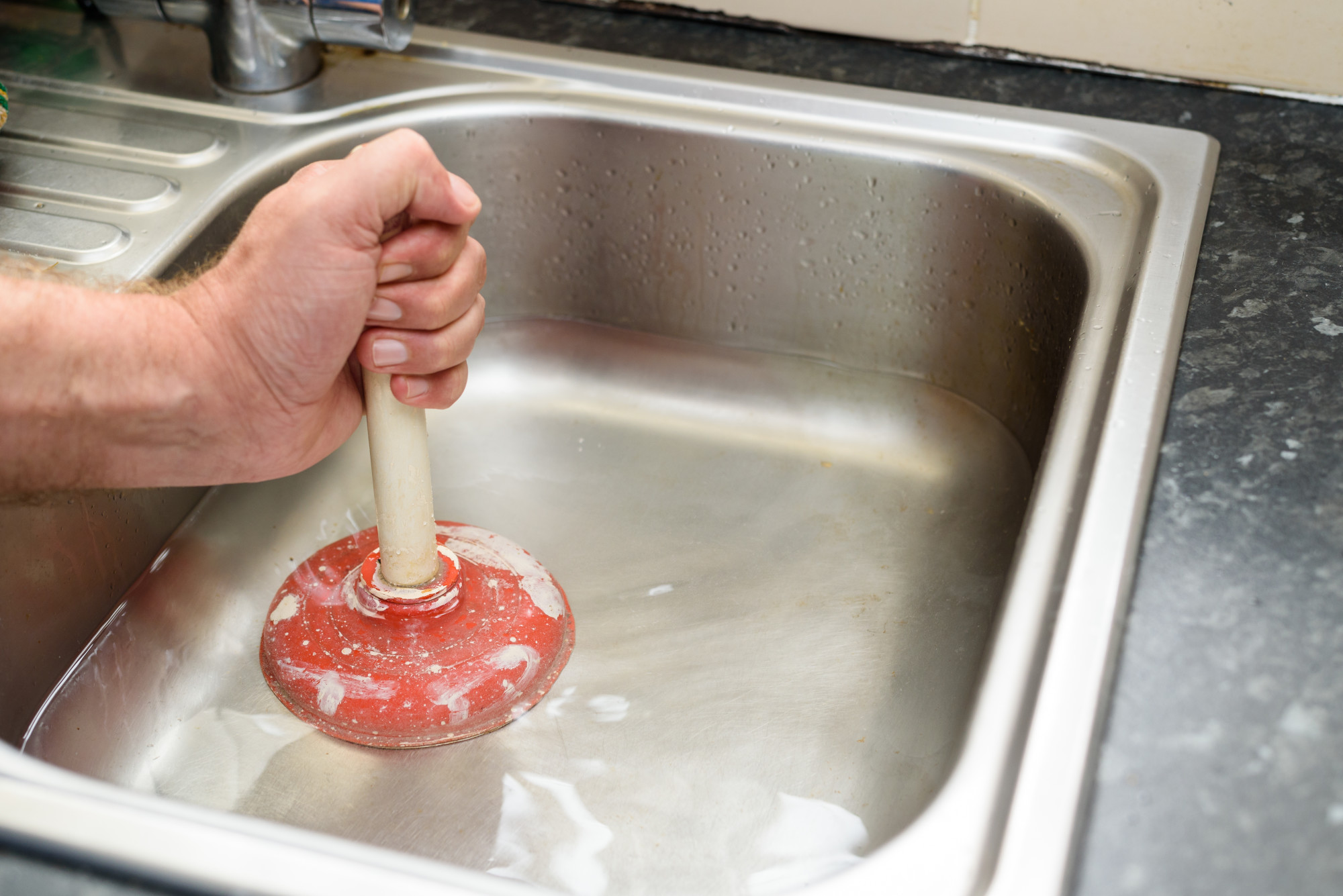How to Properly Apply Plungers and Drain Cleaners: Specialist Guidance
How to Properly Apply Plungers and Drain Cleaners: Specialist Guidance
Blog Article
Listed here below you will find additional incredibly good content concerning Here's How to Correctly Use a Toilet Plunger.

Intro
Appropriate upkeep of household drains pipes is essential for avoiding blockages and ensuring smooth water flow. One of the trick devices in every home owner's toolkit is the bettor, alongside various drain cleansers made to take on persistent blockages effectively. This post checks out just how to use bettors and drain cleansers properly to keep your drains pipes moving openly.
Section 1: Understanding Bettors
Types of Plungers
There are numerous kinds of bettors offered, each developed for various types of drains and blocks. The most common types consist of cup plungers, flange bettors, and accordion plungers.
Exactly How Plungers Work
Plungers work with the principle of producing pressure and suction to remove blockages. When effectively applied over a drainpipe, they create a vacuum cleaner that can pull out debris or separate blockages.
Picking the Right Bettor
Selecting the appropriate plunger depends on the kind of drainpipe and the nature of the blockage. Mug bettors are excellent for sinks and bathtubs, while flange bettors are much better fit for commodes as a result of their design.
Usual Errors with Bettors
Staying clear of these errors guarantees effective plunging: incorrect seal around the drainpipe, not enough pressure, and unclear bordering particles.
Section 2: Using Plungers Efficiently
Preparation
Before diving, make certain the bettor covers the drainpipe completely and creates a tight seal. Clear any type of noticeable debris around the drainpipe opening.
Strategy
Begin with gentle plunging motions to construct suction. Boost pressure slowly, utilizing a consistent rhythm. Repeat as needed until the drain removes.
Repairing Tips
If plunging doesn't work, attempt readjusting the seal, applying oil jelly for a far better seal, or making use of a various type of plunger.
Area 3: Comprehending Drain Cleaning Company
Kinds Of Drain Cleaning Company
Drain cleaners can be chemical or enzymatic. Chemical cleansers utilize solid chemicals to liquify blockages, while chemical cleansers make use of all-natural enzymes to break down raw material.
Exactly How Drain Cleaning Company Work
Chemical cleansers respond with clogs to dissolve them, while chemical cleaners break down organic materials like hair and grease without hurting pipes.
Security Factors to consider
Always put on gloves and eye protection when utilizing chemical drainpipe cleaners. Ensure adequate ventilation and follow maker guidelines very carefully.
Eco-Friendly Alternatives
Think about utilizing vinegar and cooking soft drink or enzyme-based cleaners for eco-friendly alternatives that are safer for pipelines and the environment.
Area 4: Using Drainpipe Cleaners Properly
Application Techniques
Put chemical cleaners directly right into the drain opening. Enable them to benefit the recommended time prior to purging with hot water. Enzymatic cleansers need to sit overnight.
Preventative measures
Avoid mixing different kinds of cleansers, as this can generate toxic fumes. Never use chemical cleaners together with a bettor, as spilling can take place.
Taking Care Of Persistent Obstructions
For relentless obstructions, take into consideration making use of a pipes serpent or calling an expert plumbing technician to avoid damage to pipelines.
Verdict
Finally, comprehending how to use bettors and drain cleansers properly is essential for keeping healthy pipes systems. By selecting the right tools and methods, home owners can deal with small clogs and avoid major pipes issues down the line.
TIPS ON HOW TO EFFECTIVELY USE A PLUNGER
The plunger is plumbing's best-kept secret. A plunger is great at helping dislodge basic clogs in your sinks, showers, tubs, and floor drains. Following is a brief summary on how you can effectively use a plunger on all your drains.
EFFECTIVE PLUNGING TECHNIQUES
Always keep a tight seal over the opening the entire time you are plunging.
If you have a stiff plunger, pour hot water over it to soften the rubber before plunging.
Start with a gentle push to get the air out of the cup. Any air that remains in the cup will compress and reduce the effectiveness of your efforts.
Keep the plunger vertical when you plunge. Plunging with the handle at an angle reduces the amount of force you can leverage.
Don't use chemicals and a plunger at the same time. The chemicals could splash out of the water and onto your skin.
PLUNGING THE TOILET
The most common use for a plunger is to get rid of a toilet clog. Toilets require a specific type of plunger, called a flange plunger, which features a funnel on the end of the cup. The flange should be inserted into the opening in the bottom of the toilet bowl. The flange helps ensure that you maintain a watertight seal while plunging.
PLUNGING A SINK AND TUB
If you have a bathroom sink that is blocked, try using a plunger before you use chemical drain cleaners or attempt more invasive procedures. Be sure to use a sink plunger (without a funnel, or flange). Put a wet rag into the overflow opening to prevent air from escaping and remove the drain pop-up assembly before plunging.
PLUNGING A SHOWER OR FLOOR DRAIN
When removing clogged drains in a floor drain make sure the plunger is sealed tightly against the floor. As with sinks and tubs, use a plunger without a funnel or flange.
PLUNGING A KITCHEN SINK
Plunging a kitchen sink requires the same techniques as the bathroom sink with a slight difference; the kitchen sink doesn't have an overflow opening. However, if you have a divided sink with a drain in each section you will need to block the openings in the sections you are not plunging.

Application Techniques
Put chemical cleaners directly right into the drain opening. Enable them to benefit the recommended time prior to purging with hot water. Enzymatic cleansers need to sit overnight.
Preventative measures
Avoid mixing different kinds of cleansers, as this can generate toxic fumes. Never use chemical cleaners together with a bettor, as spilling can take place.
Taking Care Of Persistent Obstructions
For relentless obstructions, take into consideration making use of a pipes serpent or calling an expert plumbing technician to avoid damage to pipelines.
Verdict
Finally, comprehending how to use bettors and drain cleansers properly is essential for keeping healthy pipes systems. By selecting the right tools and methods, home owners can deal with small clogs and avoid major pipes issues down the line.
TIPS ON HOW TO EFFECTIVELY USE A PLUNGER
The plunger is plumbing's best-kept secret. A plunger is great at helping dislodge basic clogs in your sinks, showers, tubs, and floor drains. Following is a brief summary on how you can effectively use a plunger on all your drains.
EFFECTIVE PLUNGING TECHNIQUES
Always keep a tight seal over the opening the entire time you are plunging. If you have a stiff plunger, pour hot water over it to soften the rubber before plunging. Start with a gentle push to get the air out of the cup. Any air that remains in the cup will compress and reduce the effectiveness of your efforts. Keep the plunger vertical when you plunge. Plunging with the handle at an angle reduces the amount of force you can leverage. Don't use chemicals and a plunger at the same time. The chemicals could splash out of the water and onto your skin. PLUNGING THE TOILET
The most common use for a plunger is to get rid of a toilet clog. Toilets require a specific type of plunger, called a flange plunger, which features a funnel on the end of the cup. The flange should be inserted into the opening in the bottom of the toilet bowl. The flange helps ensure that you maintain a watertight seal while plunging.
PLUNGING A SINK AND TUB
If you have a bathroom sink that is blocked, try using a plunger before you use chemical drain cleaners or attempt more invasive procedures. Be sure to use a sink plunger (without a funnel, or flange). Put a wet rag into the overflow opening to prevent air from escaping and remove the drain pop-up assembly before plunging.
PLUNGING A SHOWER OR FLOOR DRAIN
When removing clogged drains in a floor drain make sure the plunger is sealed tightly against the floor. As with sinks and tubs, use a plunger without a funnel or flange.
PLUNGING A KITCHEN SINK
Plunging a kitchen sink requires the same techniques as the bathroom sink with a slight difference; the kitchen sink doesn't have an overflow opening. However, if you have a divided sink with a drain in each section you will need to block the openings in the sections you are not plunging.

Do you like more info about A Guide to Plungers (and How to Use Them)? Post a comment directly below. We would be pleased to know your responses about this page. In hopes to see you back again soon. Loved our posting? Please share it. Help somebody else discover it. Thanks a bunch for your time. Revisit us soon.
Call Today Report this page